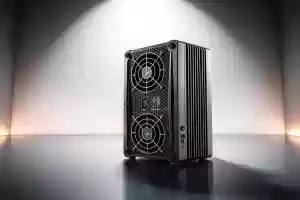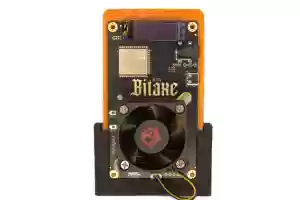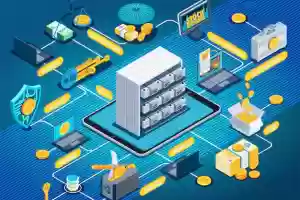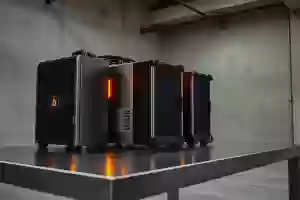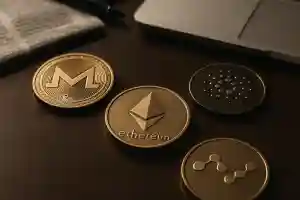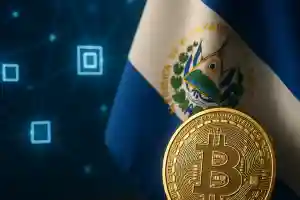Bitaxe Ultra Found Block #887,212 Solo: A DIY Miner’s Big Bitcoin Win in 2025
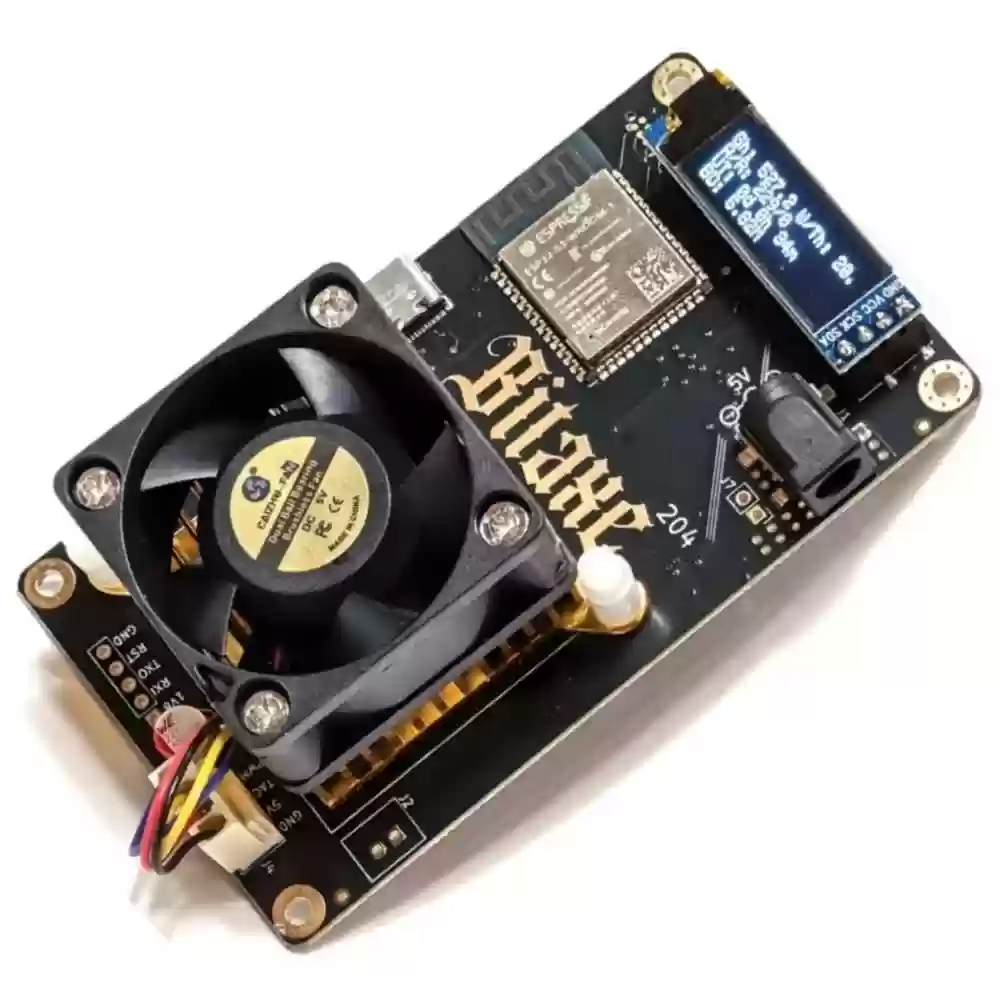 13 Mar 25
13 Mar 25
Block #887,212 represents an extraordinary milestone in Bitcoin mining. This week, a home-based miner using a Bitaxe Ultra successfully mined this block, showcasing the potential of open-source, DIY mining setups in an era dominated by large-scale operations. The fact that the Bitaxe Ultra found block highlights the opportunity for solo miners to still compete, despite the odds stacked by Bitcoin's ever-increasing network difficulty.
For those curious about maximizing their solo mining efforts, tools like the Bitaxe Ultra are proving to be not just viable, but effective. Learn more about enhancing your setup by exploring tips on overclocking Bitaxe for better performance. With determination, even small-scale miners can achieve large-scale success.
What is the Bitaxe Ultra?
The Bitaxe Ultra is not just another Bitcoin mining device; it represents a shift toward user empowerment with its open-source design. It has quickly gained traction among DIY miners and tech enthusiasts alike, breaking barriers traditionally associated with large-scale Bitcoin mining. Its recent success in mining Block #887,212 further cements its effectiveness and appeal for solo miners looking to tap into Bitcoin’s massive blockchain network.
Open-Source and DIY Benefits
One of the standout features of the Bitaxe Ultra is its open-source nature, which opens up endless possibilities for customization. By giving users the freedom to assemble and modify their devices, Bitaxe Ultra fosters a community of innovative miners who can tweak hardware and software configurations to suit unique needs.
Being open-source means you aren’t stuck with a standard, one-size-fits-all device. You can experiment with more efficient cooling systems, configure firmware for greater hash rate control, or even develop third-party add-ons. The beauty of this lies in its adaptability, perfect for hobbyist miners who value creativity and control over their setups. For specific advice on turbocharging your mining performance, check out these mining profitability tips.
Key Specifications of the Bitaxe Ultra
A mining rig’s capabilities lie in its specs, and the Bitaxe Ultra doesn’t disappoint. It’s powered by the BM1366 ASIC chips, a feature that enables highly efficient Bitcoin mining. These same chips are renowned for their role in powerhouse industrial devices like the Antminer S19XP.
Here are some key technical highlights:
- Hash Rate: Up to 400 GH/s
- Power Consumption: Approximately 3.3 W/GH
- Connectivity Options: WiFi-enabled for easy setup without relying on tethered connections
- Build: Compact, 3D-printed casings that protect key components
These specifications make it exceptionally efficient for solo miners, ensuring that power usage remains practical without sacrificing hash performance. For further details on configuring your Bitaxe Ultra, you can explore guides like Bitaxe and its potential for solo mining setups.
Why Choose Bitaxe Ultra Over Industrial Mining Rigs?
The mining sphere is dominated by massive industrial operations, but the Bitaxe Ultra carves out its space by focusing on efficiency and affordability. Here’s why it appeals to solo miners:
- Cost-Effective: Compared to large-scale rigs costing thousands of dollars, Bitaxe Ultra is more affordable with a lower barrier to entry for Bitcoin enthusiasts.
- Ease of Setup: Its DIY nature ensures you’re not reliant on a third-party technician. Even if you’re tinkering for the first time, setup tutorials are widely available.
- Solo Miner-Friendly: While industrial rigs are better suited for mining pools, the Ultra allows individual miners to operate without cutting into profits. Want to know your chances of finding a block as a solo operator? Check this resource on solo mining statistics.
- Noise Reduction & Portability: Designed for home environments, it runs quietly while remaining unobtrusive in size.
If large rigs are freight trains, the Bitaxe Ultra is more like a well-tuned motorcycle, lean, efficient, and agile. Whether mining as a hobby or testing out solo capabilities, it easily justifies its place in your strategy.
Keep in mind that these features make the “Bitaxe Ultra found block” achievement even more exciting. For mining enthusiasts, it’s proof that you don’t need a data center to chase milestones.
The Discovery of Block #887,212: Bitaxe Ultra in Action
Mining Block #887,212 with the Bitaxe Ultra is a remarkable victory for small-scale miners. In a field often overshadowed by industrial operations, this success showcases the potency of DIY setups and open-source tools when used strategically. Here’s a closer look at how this block was mined and the ripple effects it has created across the mining community.
How Block #887,212 Was Mined
The journey to mining Block #887,212 began with raw computational power and strategic decision-making. The Bitaxe Ultra, an efficient open-source device, was pivotal. But what really stands out is how small-scale miners are thriving with platforms like CKpool. This pool connects individual miners, giving them a robust shot at competing with massive mining farms.
Here’s what played a role:
- Hash Rates: The Bitaxe Ultra manages up to 400 GH/s, economical yet efficient. This level of hashing power isn’t typically expected to find blocks independently, but tools like CKpool made it possible.
- CKpool’s Contribution: By allowing miners to submit partial work until they hit the jackpot, CKpool levels the playing field. Small-time operators can realistically take part in finding a full block. Find detailed tips on improving your solo mining potential with resources like this overclocking guide.
- Block Reward: At the time of discovery, the miner pocketed a reward funded by the Bitcoin network’s block subsidy and transaction fees. This example highlights the appeal of solo mining, no profit shares or fees, just individual success.
With Bitcoin's complexity growing, such wins seem improbable, but moments like this prove they’re not impossible.
Market Impact and Community Reactions
Within hours of the block being mined, the excitement was palpable within the crypto community. A surge of posts on Reddit under the BitcoinMining subreddit celebrated this feat. Enthusiasts and miners exchanged ideas and amazement at how the Bitaxe Ultra, a relatively compact device, managed this extraordinary accomplishment.
What were people saying online?
- On Twitter/X: Users flooded discussion threads, with accounts like Bitcoin News on X enthusiastically sharing, “A single Bitaxe just found block 887212!”
- Dedicated Forums: Subreddits like r/BitAxe saw new posts with questions about hardware configurations, overclocking techniques, and even installation inspirations.
- Community Recognition: This isn’t just about technical achievement. It’s a morale boost for small miners everywhere. Platforms often celebrate industrial players, but here’s proof that solo operations have a vested seat at the table too.
From an economic perspective, such events bolster interest in accessible, low-cost mining solutions, further demonstrating that decentralization remains integral to Bitcoin's ethos. Moments like the Bitaxe Ultra found block create a ripple effect, encouraging new participants to reimagine what small-scale mining can achieve.
If you'd like further insight into increasing mining success rates, consider exploring related guides like boosting mining profitability. The Bitaxe Ultra’s triumph is a case study in how one breakthrough breathes fresh energy into Bitcoin’s decentralized ecosystem.
Solo Mining with Bitaxe Ultra: Opportunities and Challenges
The story of the Bitaxe Ultra found block has sparked buzz in the Bitcoin mining community, spotlighting the potential for small-scale miners to compete in a space dominated by industrial-sized operations. Investing in and working with the Bitaxe Ultra offers exciting possibilities but also requires understanding its limits. Let’s dive into the key aspects solo miners should consider.
Understanding the Odds of Solo Mining Success
Mining Bitcoin as a solo operator is not for the faint of heart. With surging difficulty levels and an ever-expanding hash rate in the Bitcoin network, the chances of hitting a block can seem daunting. The Bitaxe Ultra, which recently achieved the extraordinary by mining Block #887,212, defies these odds. But how likely is it for a solo miner to strike gold?
The odds heavily depend on your total hash rate relative to the entire network. For example:
- Hash Rate: The Bitaxe Ultra generates up to 400 GH/s.
- Global Network Hash Rate: At the time of writing, it's sitting well above 400 EH/s (or 400,000,000 GH/s).
This disparity means the chance of finding a block is minuscule, something like 1 in 1 billion per attempt. Yet, platforms like CKpool shift the dynamics slightly by giving miners opportunities to continually hash away without joining traditional mining pools. Intrigued? Learn more about the realism of solo mining through this guide: Solo Mining Bitcoin with NerdMiner.
While the hurdles are steep, as demonstrated by recent events, success isn’t out of reach, especially with the right mindset, tools, and luck on your side.
Tips for Optimizing Mining with Bitaxe Ultra
To maximize your chances, optimizing your Bitaxe Ultra is essential. Small tweaks can make a big difference, especially when you’re competing against behemoth mining farms. Here are some actionable tips:
- Overclocking: Push your hardware to its limits by fine-tuning its settings. While this can marginally enhance hash rates, it comes with the trade-off of increased power consumption.
- Effective Cooling: Mining hardware generates heat, and keeping your Bitaxe Ultra running optimally means effective temperature management. Invest in active cooling systems or simple USB-powered fans for better airflow.
- Efficient Power Use: Use a reliable power supply with low energy loss to keep those electricity bills in check. Avoid budget-grade units, as they can affect mining stability.
For more pro tips on configuring your mining setup, visit this guide: Boost Mining Profitability With Pro Tips. Small tweaks like these won’t just improve your odds; they’ll enhance the longevity and efficiency of your device.
Limitations of Bitaxe Ultra
Despite its promise, the Bitaxe Ultra isn’t without its drawbacks. In the context of Bitcoin’s mining industry, this compact, DIY-friendly device faces some inherent challenges:
- Lower Hash Rates: The Ultra’s 400 GH/s capability is a fraction of what industrial rigs like the Antminer S19 can achieve. This makes it highly unlikely to find blocks unless luck favors you.
- Intense Competition: Increased hash rates across the network mean that any solo miner faces long odds.
- Mining Difficulty: As Bitcoin adoption grows and more miners enter the network, the reward cycles tighten. Factor in the looming halving events, and the profitability gap widens further.
While the Bitaxe Ultra stands as a beacon of accessible mining, it’s crucial to temper your expectations. Tools like this are better suited to hobbyists or passionate enthusiasts rather than those seeking to scale their mining operations for profit. Interested in a deeper analysis of solo setups? Look into additional resources about achieving solo mining success.
In summary, while the Bitaxe Ultra found block achievement is inspirational, understanding the risks and limitations ensures you approach solo mining with realistic expectations and an informed perspective.
The Future of Open-Source Mining
As the Bitcoin network evolves, open-source mining is emerging as a key element in reshaping how individuals and small-scale miners participate. Unlike large mining operations with state-of-the-art equipment and centralized control, open-source technology puts the tools of innovation and participation directly into the hands of the community. This shift is not just revolutionary; it's necessary in order to maintain Bitcoin’s ethos of decentralization and accessibility.
Empowering Individual Miners
Open-source mining opens up vast possibilities for hobbyists, technologists, and small-scale entrepreneurs. It allows anyone with technical know-how and a bit of curiosity to contribute to the Bitcoin ecosystem. Devices like the Bitaxe Ultra exemplify this transformation. By allowing users to assemble, modify, or repair their hardware without reliance on proprietary services, these open-source solutions enable a level of creativity and autonomy that traditional mining rigs cannot offer.
This is more than just a technological advancement; it's a cultural shift. Open-source systems fuel collaboration, leading to faster innovation and more efficient designs. For a deeper understanding of how to get started on your mining journey with similar devices, check out this step-by-step solo mining guide with Bitaxe.
Decentralization Through Open-Source Adoption
At the heart of Bitcoin lies a commitment to decentralization. Open-source mining is one of the most effective ways to safeguard this principle by preventing mining power from consolidating into only a few massive players. When individuals can freely access and build mining hardware, the network becomes more diversified, ultimately leading to a more secure blockchain.
Some forward-thinking initiatives, like CKpool, align perfectly with the decentralized philosophy. Platforms like these allow solo miners, using open-source rigs, to compete against industrial setups. Such inclusivity adds resilience to the network while keeping the original vision of Bitcoin alive. Community-driven tools and frameworks further amplify the possibility for decentralized success, as demonstrated by the Bitaxe Ultra’s remarkable achievements.
Challenges Ahead for Mass Adoption
Despite its many strengths, open-source mining comes with challenges. While these systems lower the barrier for innovation, they require a certain level of technical expertise, which may deter some potential users. Additionally, as the Bitcoin network's difficulty continues to increase, even optimized open-source devices may face diminishing returns unless paired with highly efficient algorithms or groundbreaking hardware innovations.
The adoption of open-source mining solutions still depends heavily on education and accessibility. Bridging the knowledge gap is critical to ensure that more individuals can take part in Bitcoin mining without getting overwhelmed. For beginners, tools like the NerdMiner Beginner's Guide offer a simplified starting point for understanding setup and operations.
The Role of Collaboration in Open-Source Advancements
Collaboration is at the core of the open-source philosophy. By sharing resources and innovations, developers and miners worldwide can accelerate breakthroughs that improve mining efficiency and sustainability. Beyond technical collaboration, open-source mining also fosters a sense of community, a critical ingredient in any decentralized system.
The success of home-based miners like those using the Bitaxe Ultra amplifies the industry’s need for a broader embrace of open-source principles. Looking ahead, partnerships between independent developers, mining pools, and hardware builders could drive the next wave of accessible, energy-efficient, and durable mining rigs. For a look at how open-source mining could shape the industry further, read Bitcoin Magazine's take on the future of home mining.
Conclusion
The Bitaxe Ultra's achievement of successfully mining Bitcoin block #887,212 is a landmark for small-scale miners and DIY enthusiasts worldwide. It demonstrates that even in a space largely dominated by massive operations, accessible and open-source tools can still make waves. This unexpected success not only reignites hope for individual miners but also underscores the growing relevance of decentralization in Bitcoin's future.
For those inspired by this feat, the Bitaxe Ultra proves that innovation, resourcefulness, and determination still hold a vital place in Bitcoin mining. Whether you're exploring solo mining or considering tools like this to join the race, now is the time to rethink possibilities. To learn more about boosting your mining efforts, explore resources like solo mining strategies to enhance your approach.
Above all, the Bitaxe Ultra finding block #887,212 is a testament to the transformative power of community-driven ingenuity. It reinforces that Bitcoin remains truly for everyone, staying faithful to its decentralized roots.













